Naturally fresh, beautifully stored
Honey & Orange Sourdough Bundt Cake: With the aroma of a garden
A soft, golden Bundt made with honey infused with orange zest and thyme. Made with sourdough discard for a moist, fragrant crumb. A recipe that blends Mediterranean warmth with the comforting spirit of traditional home baking.
A
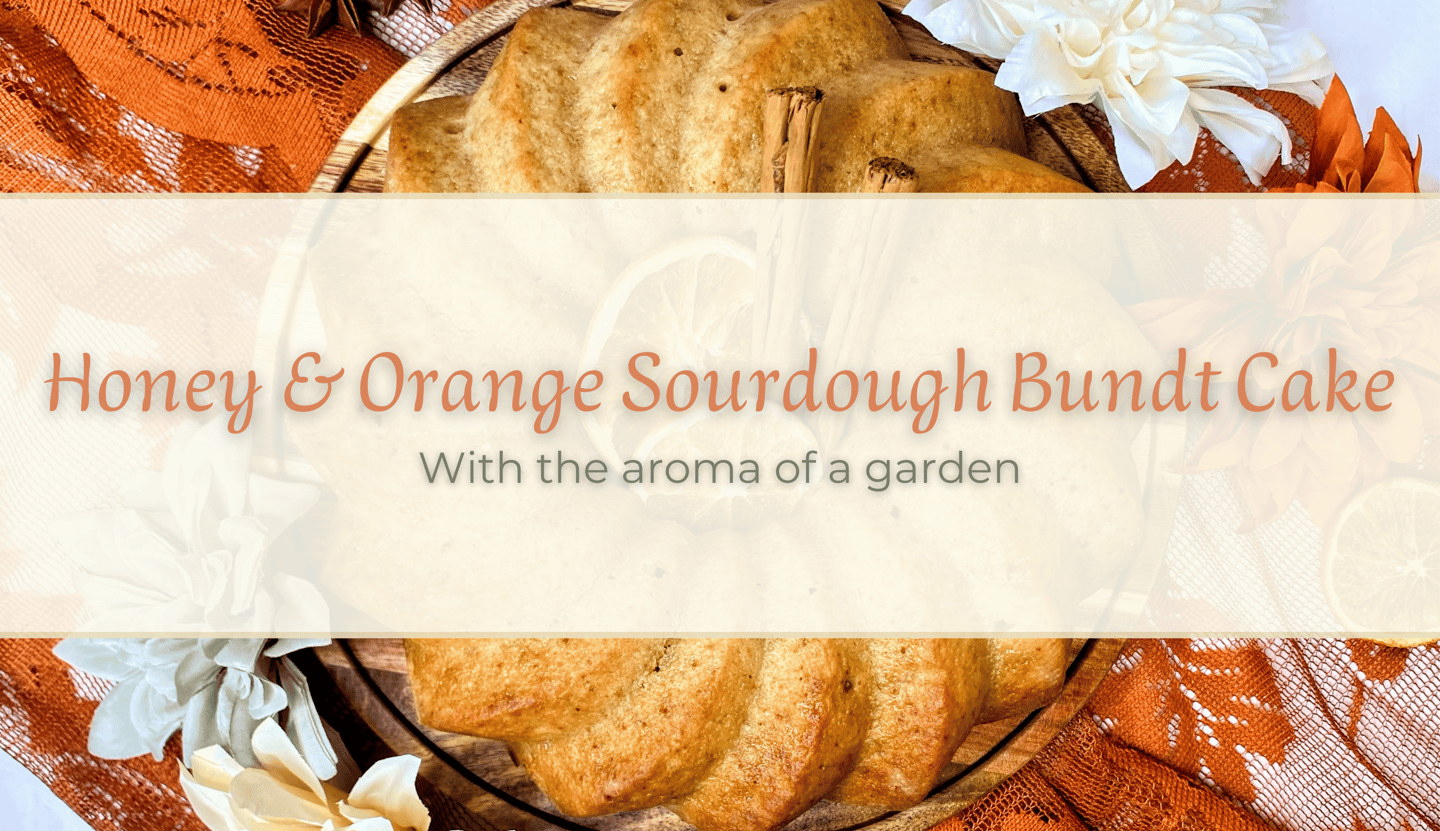

There’s something deeply comforting about a Bundt cake.
Its round shape, golden curves, and the way it fills the kitchen with the aroma of butter, honey, and citrus.
This one came to life almost by accident, as a way to use up some leftover sourdough starter, and it turned into one of those cakes that make you stop and breathe in before taking the first bite.
The honey infused with fresh thyme and orange zest gives it a warm, natural, slightly wild fragrance.
The discard (inactive sourdough starter) adds moisture and a faint tanginess that balances the sweetness.
The result: a tender, juicy crumb with the familiar comfort of a traditional cake, yet a modern and lively character.
A Bit of History
The Bundt cake traces its roots to Central Europe, inspired by old yeast-based cakes like kugelhopf or babka. With its ring shape and dense texture, it was often the centerpiece of family gatherings and celebrations. In the 1950s, the American company Nordic Ware reimagined this tradition by designing the iconic metal Bundt pan.
Since then, the Bundt has become a staple of home baking around the world. Its unique mold allowed anyone to make tall, beautiful cakes without special techniques, sparking a wave of creativity that spread globally. Today, there are countless versions. From classic vanilla and chocolate to modern twists like this one.
This version carries that legacy but with a Mediterranean soul: honey, orange, and thyme. And as a nod to natural baking, it includes sourdough starter, not to make it rise, but to add depth and texture.
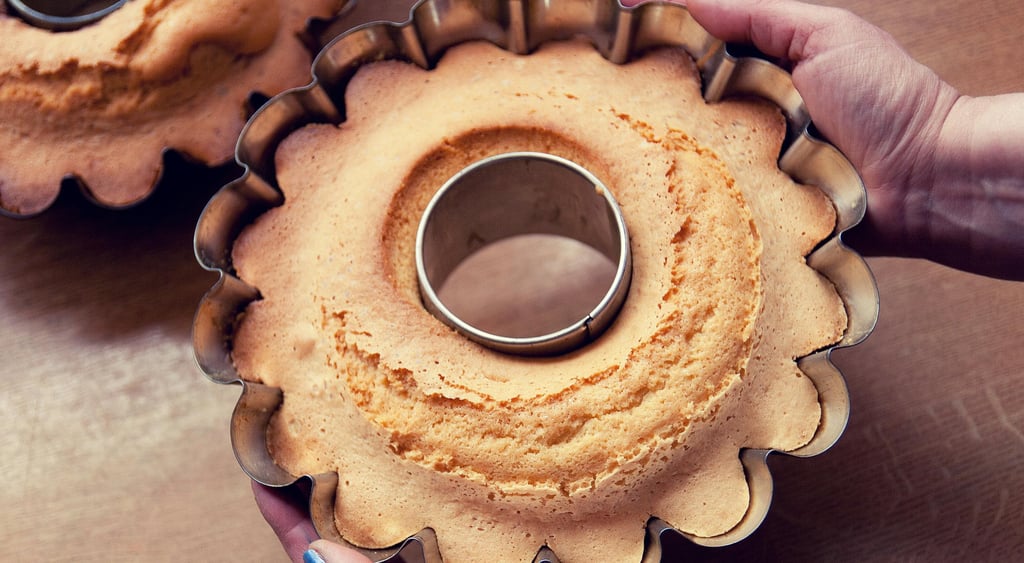

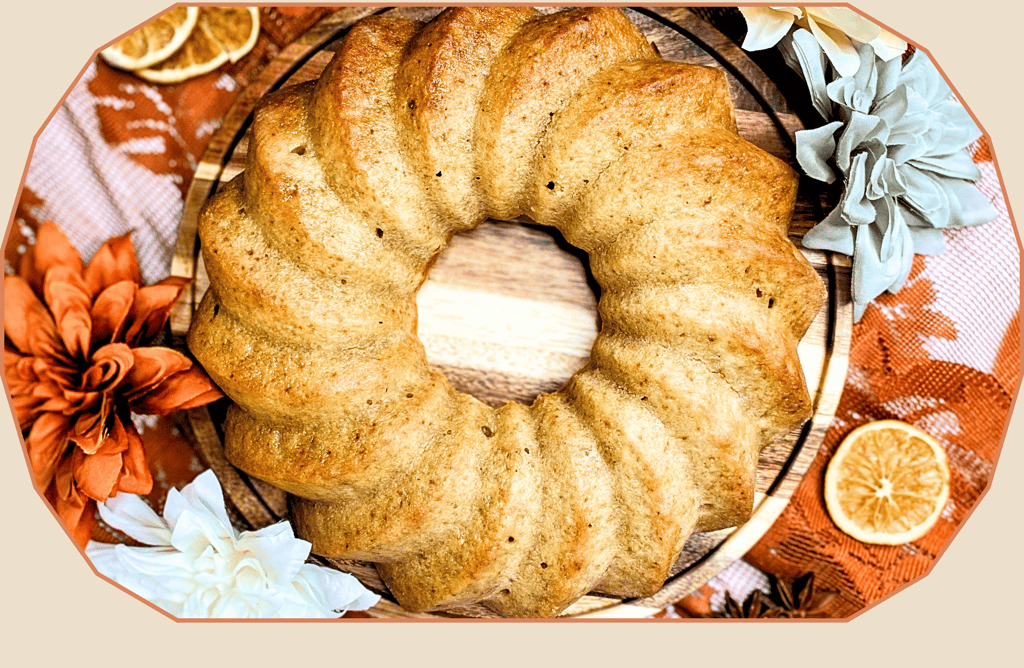

Ingredients (1-liter mold)
100 g (3/4 cup) all-purpose flour
100 g (3/4 cup) whole wheat flour (coarse, with bran)
80 g (1/3 cup) sourdough discard (inactive starter, slightly tangy)
90 g (6 tbsp) unsalted butter, at room temperature
150 g (1/2 cup) infused honey (see above)
1 large egg + 1 yolk
70 g (1/4 cup) kefir (used in this recipe, but you can also make it perfectly with the same amount of sour cream)
50 g (3 tbsp) orange juice (about half an orange)
2 g (1/2 tsp) baking soda
2 g (1/2 tsp) salt
1/2 tsp ground cinnamon
1/2 tsp vanilla extract
5 g (1 tsp) olive oil (optional, for a moister crumb)
This Bundt is a small one, baked in a 1-liter (4-cup) pan. But you can easily double the recipe for a larger mold without any issues.
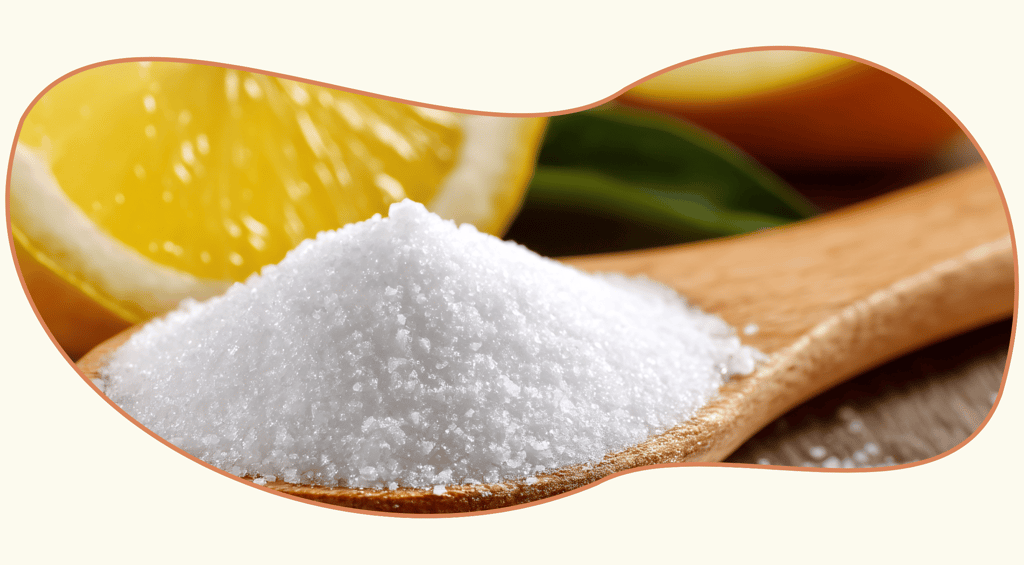

Baking Soda vs. Baking Powder: Why It Matters Here
This recipe includes several acidic ingredients: honey, kefir, orange juice, and sourdough starter. That’s why we use baking soda instead of baking powder
Baking soda:
A pure base (NaHCO₃) that needs acid to activate. When combined with honey, kefir, citrus, or sourdough, it releases carbon dioxide (CO₂), forming tiny air bubbles that lighten the crumb. It also deepens the color and adds a gentle, natural flavor.
Baking powder:
It contains baking soda and dry acids that activate with moisture and heat, so it doesn’t need acidic ingredients. It produces a lighter, more neutral crumb with a paler color, ideal for cakes without honey, yogurt, or citrus.
The baking soda reacts with the acids in the batter, creating CO₂ bubbles that lift the cake while also enhancing caramelization, giving the Bundt its rich golden hue.
If you used baking powder instead, the batter wouldn’t react the same way, and the Bundt would turn out denser.
Infusing The Honey: The Step That Changes Everything
If there’s a secret in this recipe, it’s this one.
It’s not just about sweetness, it’s about infusing aroma and character into the honey.
Place in a heatproof jar or bowl: one sprig of fresh thyme (or 1/2 teaspoon of dried thyme), and the zest of half an orange.
Warm the honey (150 g / 5.3 oz) just until it’s lukewarm, not hot, and pour it over the thyme and zest.
Cover and let steep for 15–20 minutes.
If using dried thyme, you’ll need to strain the honey. If you want to keep the zest in the cake, infuse only the thyme, strain the honey, and then add the zest back in. If you prefer a smoother texture, infuse both thyme and zest together and strain everything at the end. Leaving the zest gives a deeper, more natural flavor, while straining results in a silkier texture.
The thyme is optional, but it enhances the honey and citrus beautifully, adding a subtle herbal touch.

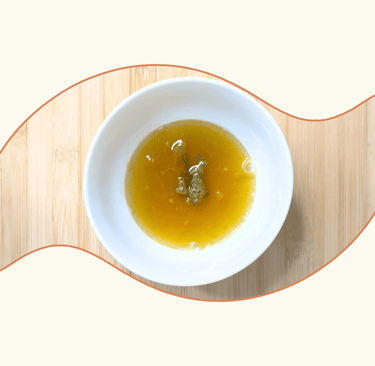
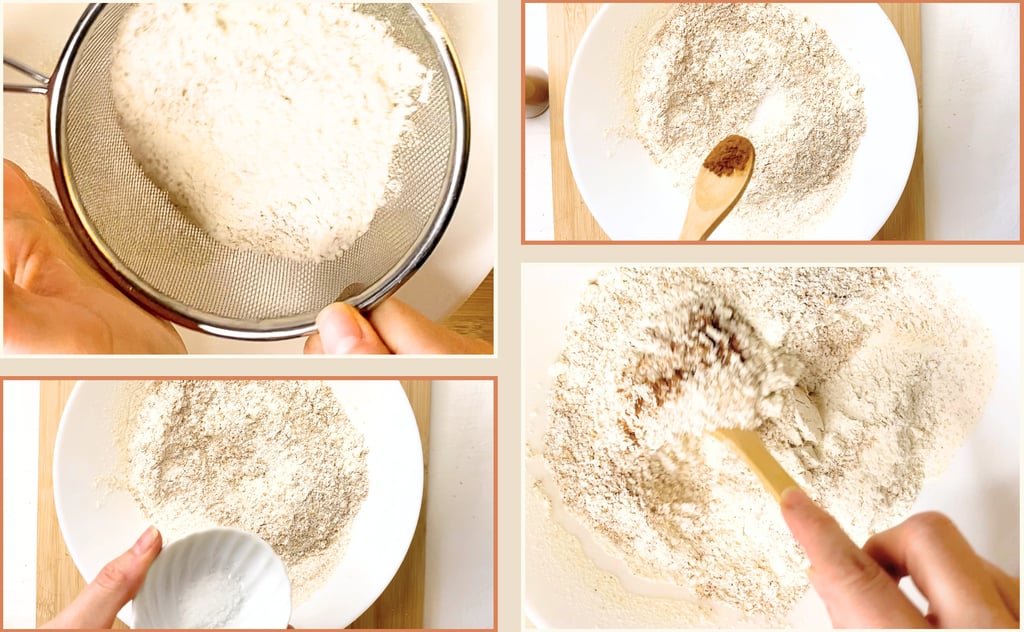

Step-by-Step
Mix the dry ingredients:
Sift the flours before using. If your whole wheat flour is coarse, you can add the leftover bran at the end for its fiber and nutrients, or leave it out for a softer texture. Add the flours, salt, cinnamon, and baking soda in a bowl and whisk to combine.
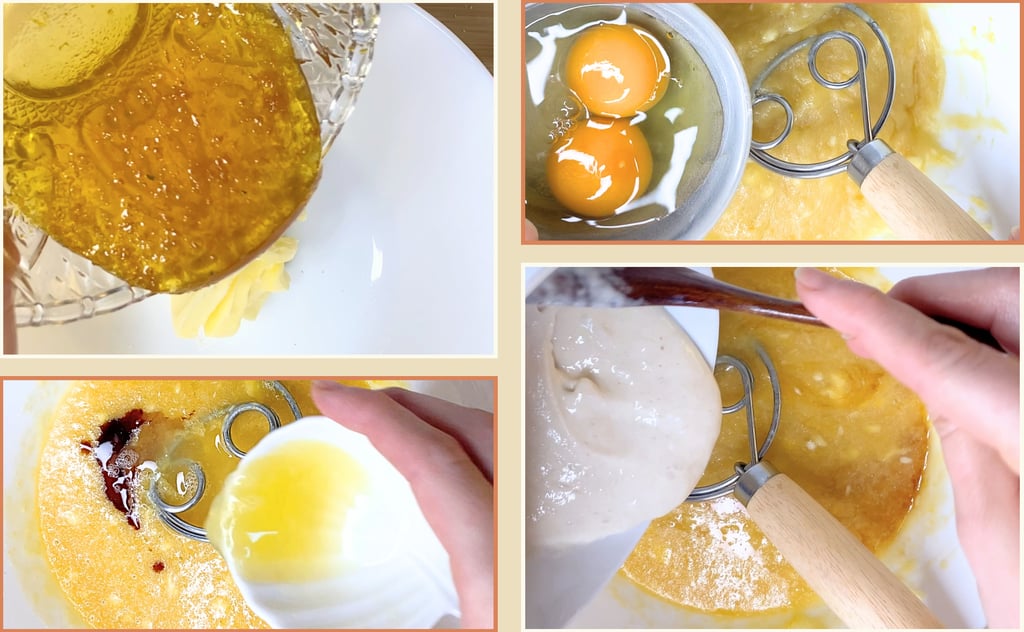

Mix the wet ingredients:
Beat the butter at room temperature until creamy. (I skipped this once and mixed it straight with the honey, which left a few butter specks, still delicious, but better to beat it first for a smoother texture). Add the infused honey at room temperature and mix well. Incorporate the egg and yolk (also at room temperature) and beat lightly. Add the vanilla, orange juice, olive oil, and sourdough discard, mixing until fully combined.
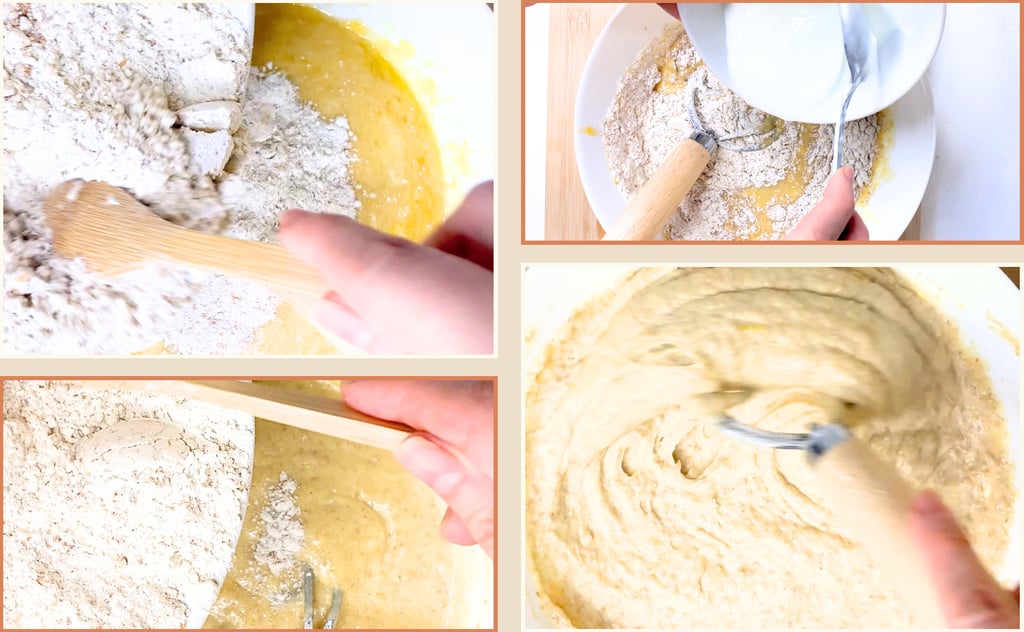

Combine dry ingredients and kefir:
Add the dry ingredients in three additions, alternating with the kefir (dry → kefir → dry → kefir → dry). Add the olive oil if using, and fold gently until smooth.

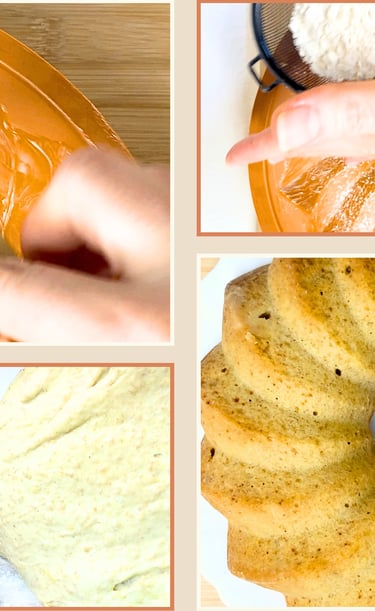
Bake and finish:
Pour the batter into the well-buttered, floured pan. Bake at 340°F (170°C) for 25–30 minutes, or until a toothpick comes out clean. Let it rest for 10 minutes before unmolding carefully. Brush the warm cake with the honey, orange, and brandy reduction.
Tip: Before pouring the batter, slightly warm the butter used for greasing, it shouldn’t be melted, just soft enough to brush easily. Use a pastry brush to ensure all the grooves of the pan are well coated, which helps prevent the cake from breaking when unmolding
Craving more cozy bakes?
Try our Sourdough Made Simple: A Beginner’s Guide to Your First Loaf , the perfect place to start your sourdough journey.
Looking for sustainable kitchen inspiration?
Read Swap Plastic for Beeswax: The Kitchen Upgrade You Didn’t Know You Needed
and discover how small changes can make a big difference.
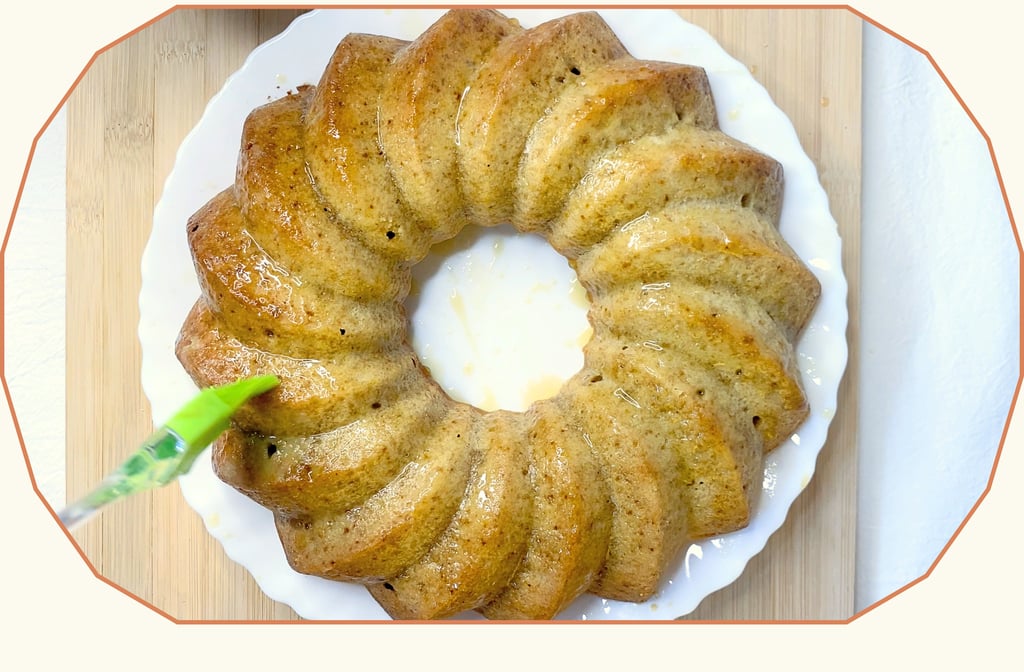

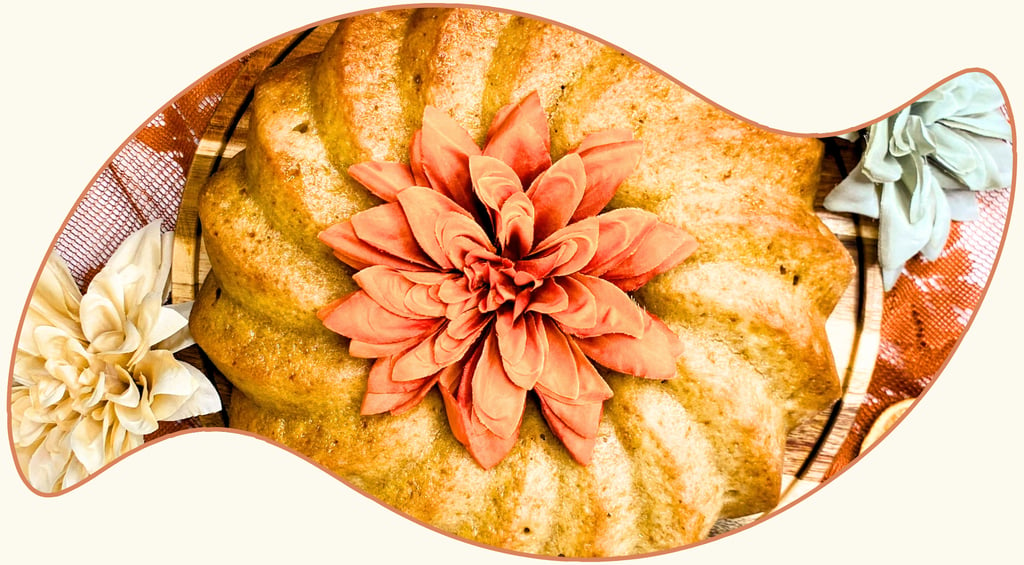

Honey, Orange & Brandy Reduction
To brush and keep the cake moist:
40 g (2 tbsp) honey
35 ml (2 1/2 tbsp) orange juice
50 g (3 tbsp) water
10 g (2 tsp) brandy
Simmer over medium heat, stirring occasionally, until it thickens and darkens slightly (10–12 minutes), reducing to about one-quarter of its original volume.
Brush the warm Bundt in thin layers.
If made thicker, it also works beautifully as a drizzle on top when serving.
You can substitute the brandy with rum, whiskey, or simply omit the alcohol altogether. You can also infuse the reduction with a small sprig of thyme for an extra herbal note.
Tips & Variations
You can swap orange for lemon (keep the thyme or try rosemary).
Olive oil helps the cake stay moist for several days.
For a lighter version, replace part of the kefir with plain yogurt.
For a glossy finish, stir in 1 tsp of butter at the end of the reduction.
This Bundt is moister than a traditional cake, with a rich flavor that deepens over time.
The infused honey, herbal thyme notes, and the gentle tang from the sourdough create a perfect balance between rustic comfort and refined flavor.
And if you serve it with a spoonful of whipped cream or yogurt on top… no one will complain.
Have You Tried Our Beeswax Bags & Wraps?
A natural way to keep your food and bread fresh while reducing plastic in your kitchen.
Each set includes 2 reusable bread bags and 2 wraps, made from 100% cotton, beeswax, jojoba oil, and pine resin.
Simple, sustainable, and long-lasting.
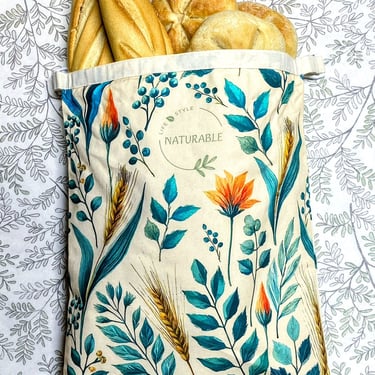
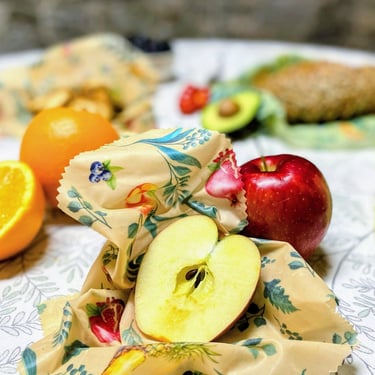
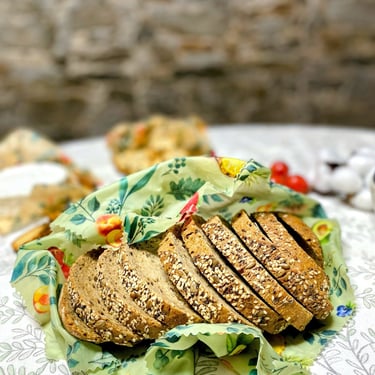
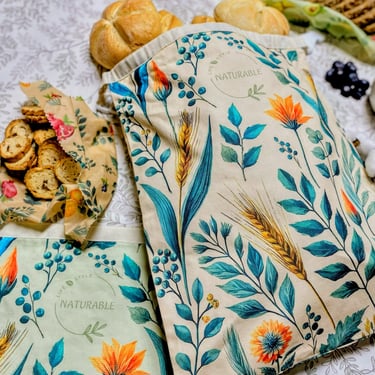
Let’s Connect on Instagram

There’s something deeply comforting about a Bundt cake.
Its round shape, golden curves, and the way it fills the kitchen with the aroma of butter, honey, and citrus.
This one came to life almost by accident, as a way to use up some leftover sourdough starter, and it turned into one of those cakes that make you stop and breathe in before taking the first bite.
The honey infused with fresh thyme and orange zest gives it a warm, natural, slightly wild fragrance.
The discard (inactive sourdough starter) adds moisture and a faint tanginess that balances the sweetness.
The result: a tender, juicy crumb with the familiar comfort of a traditional cake, yet a modern and lively character.
A Bit of History
The Bundt cake traces its roots to Central Europe, inspired by old yeast-based cakes like kugelhopf or babka. With its ring shape and dense texture, it was often the centerpiece of family gatherings and celebrations. In the 1950s, the American company Nordic Ware reimagined this tradition by designing the iconic metal Bundt pan.
Since then, the Bundt has become a staple of home baking around the world. Its unique mold allowed anyone to make tall, beautiful cakes without special techniques, sparking a wave of creativity that spread globally. Today, there are countless versions. From classic vanilla and chocolate to modern twists like this one.
This version carries that legacy but with a Mediterranean soul: honey, orange, and thyme. And as a nod to natural baking, it includes sourdough starter, not to make it rise, but to add depth and texture.




Ingredients (1-liter mold)
This Bundt is a small one, baked in a 1-liter (4-cup) pan. But you can easily double the recipe for a larger mold without any issues.
100 g (3/4 cup) all-purpose flour
100 g (3/4 cup) whole wheat flour (coarse, with bran)
80 g (1/3 cup) sourdough discard (inactive starter, slightly tangy)
90 g (6 tbsp) unsalted butter, at room temperature
150 g (1/2 cup) infused honey (see above)
1 large egg + 1 yolk
70 g (1/4 cup) kefir (used in this recipe, but you can also make it perfectly with the same amount of sour cream)
50 g (3 tbsp) orange juice (about half an orange)
2 g (1/2 tsp) baking soda
2 g (1/2 tsp) salt
1/2 tsp ground cinnamon
1/2 tsp vanilla extract
5 g (1 tsp) olive oil (optional, for a moister crumb)
This Bundt is a small one, baked in a 1-liter (4-cup) pan. But you can easily double the recipe for a larger mold without any issues.


Infusing The Honey: The Step That Changes Everything
If there’s a secret in this recipe, it’s this one.
It’s not just about sweetness, it’s about infusing aroma and character into the honey.
Place in a heatproof jar or bowl: one sprig of fresh thyme (or 1/2 teaspoon of dried thyme), and the zest of half an orange.
Warm the honey (150 g / 5.3 oz) just until it’s lukewarm, not hot, and pour it over the thyme and zest.
Cover and let steep for 15–20 minutes.
If using dried thyme, you’ll need to strain the honey. If you want to keep the zest in the cake, infuse only the thyme, strain the honey, and then add the zest back in. If you prefer a smoother texture, infuse both thyme and zest together and strain everything at the end. Leaving the zest gives a deeper, more natural flavor, while straining results in a silkier texture.
The thyme is optional, but it enhances the honey and citrus beautifully, adding a subtle herbal touch.


Baking Soda vs. Baking Powder: Why It Matters Here
This recipe includes several acidic ingredients: honey, kefir, orange juice, and sourdough starter. That’s why we use baking soda instead of baking powder
Baking soda:
A pure base (NaHCO₃) that needs acid to activate. When combined with honey, kefir, citrus, or sourdough, it releases carbon dioxide (CO₂), forming tiny air bubbles that lighten the crumb. It also deepens the color and adds a gentle, natural flavor.
Baking powder:
It contains baking soda and dry acids that activate with moisture and heat, so it doesn’t need acidic ingredients. It produces a lighter, more neutral crumb with a paler color, ideal for cakes without honey, yogurt, or citrus.
The baking soda reacts with the acids in the batter, creating CO₂ bubbles that lift the cake while also enhancing caramelization, giving the Bundt its rich golden hue.
If you used baking powder instead, the batter wouldn’t react the same way, and the Bundt would turn out denser.


Combine dry ingredients and kefir:
Add the dry ingredients in three additions, alternating with the kefir (dry → kefir → dry → kefir → dry). Add the olive oil if using, and fold gently until smooth.
Bake and finish:
Pour the batter into the well-buttered, floured pan. Bake at 340°F (170°C) for 25–30 minutes, or until a toothpick comes out clean. Let it rest for 10 minutes before unmolding carefully. Brush the warm cake with the honey, orange, and brandy reduction.
Tip: Before pouring the batter, slightly warm the butter used for greasing, it shouldn’t be melted, just soft enough to brush easily. Use a pastry brush to ensure all the grooves of the pan are well coated, which helps prevent the cake from breaking when unmolding
Step-by-Step
Mix the dry ingredients:
Sift the flours before using. If your whole wheat flour is coarse, you can add the leftover bran at the end for its fiber and nutrients, or leave it out for a softer texture. Add the flours, salt, cinnamon, and baking soda in a bowl and whisk to combine.
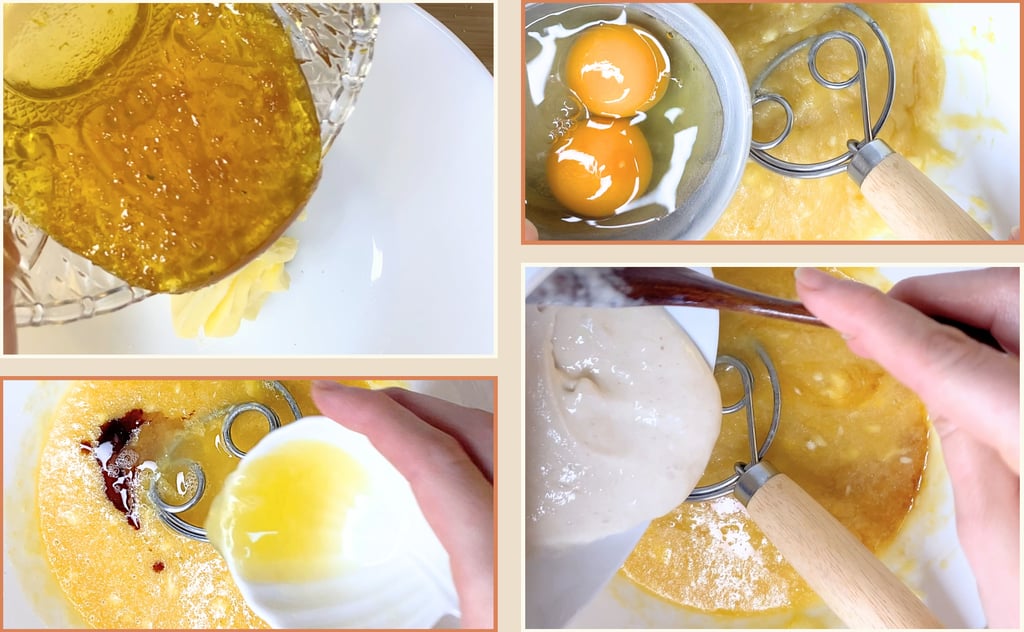





Mix the wet ingredients:
Beat the butter at room temperature until creamy. (I skipped this once and mixed it straight with the honey, which left a few butter specks, still delicious, but better to beat it first for a smoother texture). Add the infused honey at room temperature and mix well. Incorporate the egg and yolk (also at room temperature) and beat lightly. Add the vanilla, orange juice, olive oil, and sourdough discard, mixing until fully combined.
Craving more cozy bakes?
Try our Sourdough Made Simple: A Beginner’s Guide to Your First Loaf. the perfect place to start your sourdough journey.
Looking for sustainable kitchen inspiration?
Read Swap Plastic for Beeswax: The Kitchen Upgrade You Didn’t Know You Needed and discover how small changes can make a big difference.


Honey, Orange & Brandy Reduction
To brush and keep the cake moist:
40 g (2 tbsp) honey
35 ml (2 1/2 tbsp) orange juice
50 g (3 tbsp) water
10 g (2 tsp) brandy
Simmer over medium heat, stirring occasionally, until it thickens and darkens slightly (10–12 minutes), reducing to about one-quarter of its original volume.
Brush the warm Bundt in thin layers.
If made thicker, it also works beautifully as a drizzle on top when serving.
You can substitute the brandy with rum, whiskey, or simply omit the alcohol altogether. You can also infuse the reduction with a small sprig of thyme for an extra herbal note.


Tips & Variations
You can swap orange for lemon (keep the thyme or try rosemary).
Olive oil helps the cake stay moist for several days.
For a lighter version, replace part of the kefir with plain yogurt.
For a glossy finish, stir in 1 tsp of butter at the end of the reduction.
This Bundt is moister than a traditional cake, with a rich flavor that deepens over time.
The infused honey, herbal thyme notes, and the gentle tang from the sourdough create a perfect balance between rustic comfort and refined flavor.
And if you serve it with a spoonful of whipped cream or yogurt on top… no one will complain.
Have You Tried Our Beeswax Bags & Wraps?
A natural way to keep your food and bread fresh while reducing plastic in your kitchen.
Each set includes 2 reusable bread bags and 2 wraps, made from 100% cotton, beeswax, jojoba oil, and pine resin.
Simple, sustainable, and long-lasting.




Let’s Connect on Instagram

Subscribe to Our Newsletter
Join the Naturable Blog! Stay updated with our tips, kitchen hacks, and much more
Stay connected! Follow us for tips, updates, and a little extra inspiration for your home and kitchen.
Have a question or need assistance?
Feel free to contact us!
© 2025. Naturable – A brand of Horizon Origin LLC
